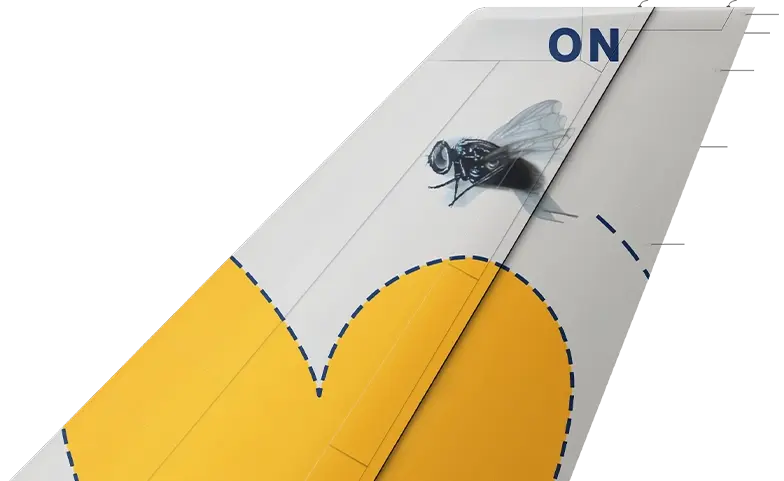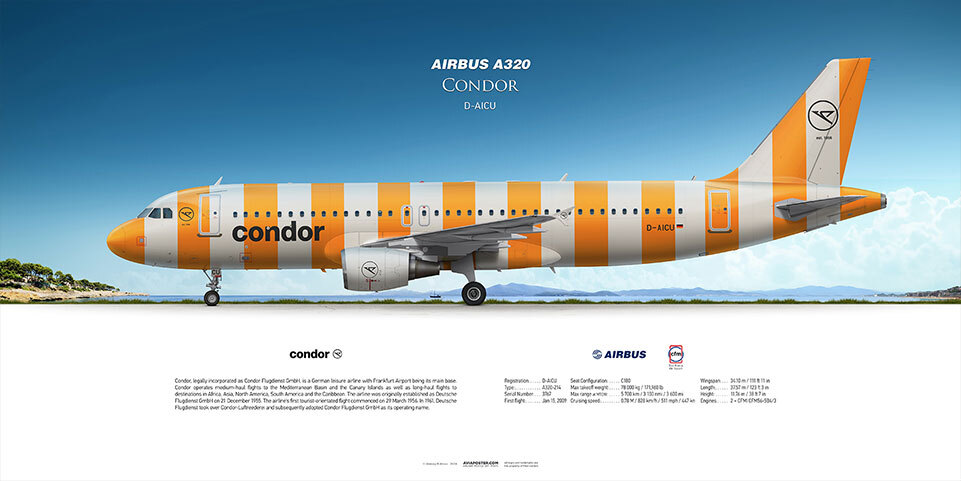While gathering material for another article on airlines (this time, my choice fell on Condor), I unexpectedly stumbled upon a phenomenon that piqued my curiosity. It was about a special livery on one of Condor’s aircraft. This livery wasn’t dedicated to a celebrity or a company owner. It was created in honor of one of the airline’s employees, about whom I could barely find any information in online sources. I came across numerous other individuals with similar names and a handful of scattered, contradictory details about this person. By piecing together all the materials and facts, I uncovered a deeply touching and unique story. This is what my article today is dedicated to. But let’s start from the beginning.
Condor Flugdienst, founded on December 21, 1955, as Deutsche Flugdienst, remains a key player in Germany’s leisure aviation sector. Operating from major hubs like Frankfurt and Munich, it serves a diverse range of short, medium, and long-haul destinations, including the Mediterranean, Asia, Africa, North and South America, and the Caribbean. Over nearly seven decades, Condor has evolved from a charter-focused carrier into a hybrid airline, now offering scheduled flights alongside charters. Renowned for innovations such as introducing a Business Class in 1991, Condor has consistently prioritized passenger comfort.
Within Condor’s fleet, the Boeing 757-300 registered as D-ABON stands out with its distinctive “Willi” livery, unveiled in 2006 to mark the airline’s 50th anniversary. Delivered to Condor in May 2000, this stretched Boeing 757 variant was designed for high-capacity routes to popular tourist destinations like the Canary Islands, Mallorca, and Hurghada. Its “Willi” livery, featuring the slogan “Wir lieben Fliegen” (We love flying), sharply contrasts with the fleet’s conventional designs. This vibrant and playful style, adorned with colorful hearts, has won the affection of passengers and aviation enthusiasts, making D-ABON an iconic presence in Condor’s lineup. The livery is a tribute to Wilfried Meyer, whose 30-year career shaped Condor’s identity as Germany’s leading leisure carrier.
Condor Flugdienst, founded on December 21, 1955, as Deutsche Flugdienst, remains a key player in Germany’s leisure aviation sector. Operating from major hubs like Frankfurt and Munich, it serves a diverse range of short, medium, and long-haul destinations, including the Mediterranean, Asia, Africa, North and South America, and the Caribbean. Over nearly seven decades, Condor has evolved from a charter-focused carrier into a hybrid airline, now offering scheduled flights alongside charters. Renowned for innovations such as introducing a Business Class in 1991, Condor has consistently prioritized passenger comfort.
Within Condor’s fleet, the Boeing 757-300 registered as D-ABON stands out with its distinctive “Willi” livery, unveiled in 2006 to mark the airline’s 50th anniversary. Delivered to Condor in May 2000, this stretched Boeing 757 variant was designed for high-capacity routes to popular tourist destinations like the Canary Islands, Mallorca, and Hurghada. Its “Willi” livery, featuring the slogan “Wir lieben Fliegen” (We love flying), sharply contrasts with the fleet’s conventional designs. This vibrant and playful style, adorned with colorful hearts, has won the affection of passengers and aviation enthusiasts, making D-ABON an iconic presence in Condor’s lineup. The livery is a tribute to Wilfried Meyer, whose 30-year career shaped Condor’s identity as Germany’s leading leisure carrier.

So, who was this “Willi”? Retiring in January 2006 at the age of 60, Meyer served as Vice President of Scheduling and Tour Operator Sales, a strategic role that defined Condor’s flight offerings and partnerships with travel agencies. From the 1970s to the early 2000s, Meyer was the vital link between the airline’s operational planning and its relationships with tour operators, strengthening Condor’s position in a competitive market. He was more than a sales executive; he was a visionary who saw human stories behind the numbers. A dip in bookings to Greece meant families missing out on vacations, while a surge in demand for the Canary Islands evoked images of newlyweds chasing sunsets. His decisions were guided not only by market trends but also by emotional intelligence, earning the trust of colleagues and partners alike. Known for personal gestures like handwritten thank-you notes to agents or bringing homemade cakes to planning meetings, Meyer fostered a warm sense of community within Condor. His leadership was not loud but deeply human, making him a beloved figure among peers. Upon retiring, Meyer left quietly—no press conferences or grand ceremonies, just warm embraces and a final stroll along the tarmac, watching “his” aircraft take flight. His presence lingers in Condor’s culture, in the warmth of its staff and the reliability of its partnerships, embodied by the charm of the “Willi” livery.

The fly on D-ABON’s tail fin, an unusual choice for an airline, is a playful nod to Meyer’s nickname, “Willi,” and reflects his knack for infusing the brand with personality. Unlike Condor’s standard condor bird logo, the fly symbolizes a lighthearted departure from tradition, embodying Meyer’s talent for memorable marketing. Unveiled in the jubilee year of 2006, when Condor operated round-the-world flights with D-ABON, the livery was dubbed a “flying declaration of love.” Its heart-covered design paid homage to Meyer’s 30-year contribution to shaping Condor’s image, transforming the airline into a synonym for joyful travel.
This creative approach was not unique in Condor’s history. In 1996, for the airline’s 40th anniversary, artist James Rizzi employed an artistic style to distinguish the brand, creating the “Rizzi-Bird” livery for a Boeing 757-200. But that’s another story.
The significance of the “Willi” livery extends beyond its visual appeal, foreshadowing Condor’s later bold design ventures. In April 2022, the airline introduced a polarizing new livery featuring vertical stripes in five vibrant colors: green (“Island”), red (“Passion”), yellow (“Sunshine”), blue (“Sea”), and beige (“Beach”). Inspired by “parasols, bath towels, and beach chairs,” this livery sparked widespread debate. Critics deemed it overly extravagant, while supporters praised its evocation of summer holidays. By 2024, about 80% of Condor’s fleet, including Airbus A320 family aircraft and the new Airbus A330neo for long-haul routes, had adopted this design. The vivid style of 2022 echoes the spirit of the “Willi” livery, signaling a continuity in Condor’s drive to transcend mundane aviation standards. Meyer’s influence, rooted in his human-centered approach to branding, likely laid the foundation for this daring rebrand, encouraging Condor to prioritize emotional resonance over conventional corporate aesthetics.

The airline is modernizing its fleet, replacing aging Boeing 757-300s with fuel-efficient Airbus A321neo aircraft. The phase-out of the Boeing 757 lineup, including the legendary D-ABON, is scheduled for completion by the end of 2025. The retirement of D-ABON, with its heart-covered fuselage, marks the end of an era defined by Meyer’s legacy of creativity and connection. As D-ABON completes its final flights in 2025, it carries forward Meyer’s spirit—a reminder that aviation is about relationships, creativity, and the courage to stand out. The fly on its tail, a whimsical tribute to a man who gave Condor his heart, will remain a symbol of this legacy as the airline soars into a new era with its modernized fleet and vibrant, controversial livery.
